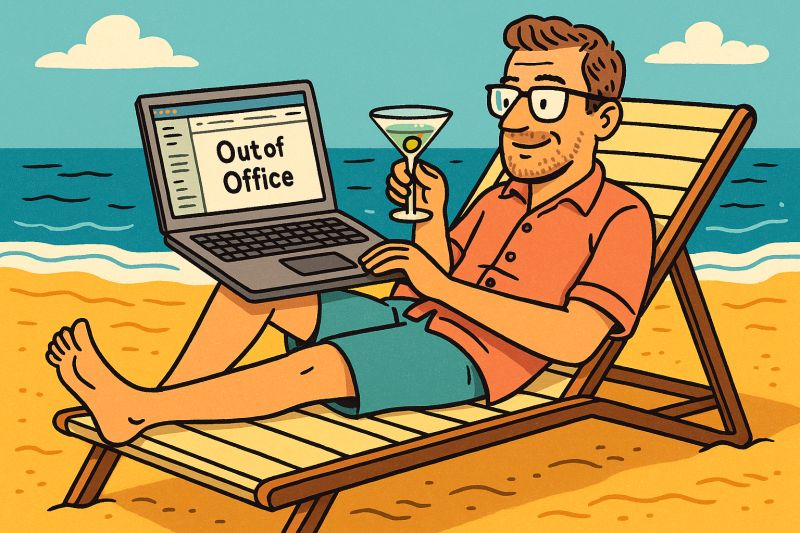Die Abwesenheitsnachricht ist höflich: "Ich werde nur eingeschränkten Zugang zu E-Mails haben." Benachrichtigungen werden stummgeschaltet. Der Laptop ist weggepackt. Alle Systeme sind "aus".
Siebzehn Minuten später wird der Posteingang überprüft.
In der modernen Vermögensverwaltung bedeutet "out of office" nicht mehr "nicht verfügbar".
Stattdessen signalisiert sie etwas ganz anderes:
- Die Reaktionszeiten können sich verlangsamen.
- Die Nachrichten werden trotzdem gelesen.
- Die Antworten kommen vielleicht mit weniger Satzzeichen, aber sie werden kommen.
Die Grenze zwischen Präsenz und Abwesenheit ist... verhandelbar geworden. Geräte verwischen die Grenze. Genauso wie die Erwartungen.
Anstatt zu 473 ungelesenen E-Mails zurückzukehren, sorgen ein paar schnelle Überprüfungen dafür, dass die Dinge "unter Kontrolle" bleiben. Eine Nachricht wird weitergeleitet, eine Notiz wird beantwortet, und eine Genehmigung wird gesendet - nur für den Fall, dass man in Verbindung bleibt.
Heute, Außerhalb des Büros funktioniert eher wie ein Tonmanagement als eine echte Unterbrechung der Verbindung. Sie bietet einen Kontext und mildert Verzögerungen ab. Aber in Wahrheit ist der Zugang immer da. Er reist mit uns - in Taschen und Handflächen.
In dieser Landschaft bedeutet "weg sein" nicht, abzuschalten. Es geht darum, die Sichtbarkeit zu steuern, Fokusund Vertrauen - aus der Ferne.
🧠 Sonntagsschulferiengedanken:
Wahre Klarheit entsteht nicht dadurch, dass man sagt: "Ich bin raus", sondern durch den Aufbau Systeme die funktionieren - auch wenn wir zurücktreten. Manchmal ist ein OOO Botschaft ist nicht für andere geschrieben. Sie ist eine stille Aufforderung an uns selbst.
Quelle: LinkedIn







